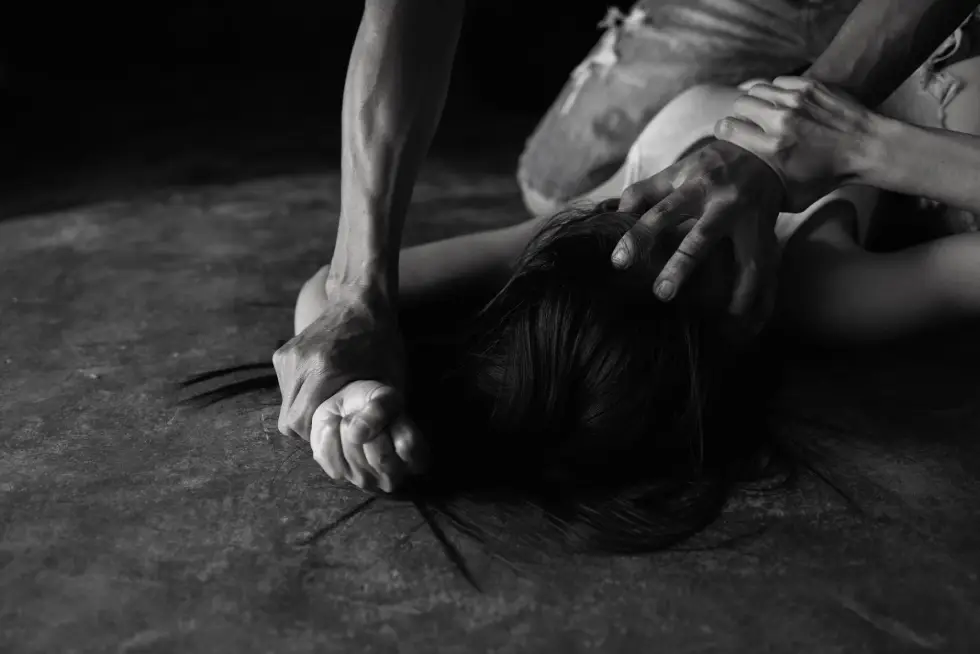As Bengalis celebrated Durga Puja, the nine-day prayer marking the victory of the goddess Durga over the demon Mahishasura, Kolkata has not managed to conquer its own misogynistic asuras. Protesting inaction regarding the horrific rape-murder of a junior doctor at R.G. Kar Medical Hospital on August 9, 2024, junior doctors in the Indian state of West Bengal entered a 17-day long “fast unto death,” calling for baseline safety reforms for medical staff across the state. In what is often dubbed the “Kolkata rape case,” a 31-year-old medical student in Kolkata was raped and murdered in the seminar room of the state-run hospital she worked at. Thousands of junior doctors in the Indian state of West Bengal went on a 42-day strike from August 9, and Chief Minister Mamata Banerjee has proposed the death penalty for convicted rapists. Yet perhaps the most significant legal changes for sexual assault victims happened much earlier this summer, with the enactment of the new Indian criminal code, the Bharatiya Nyaya Sanhita (BNS).
Overview of the criminal law reforms
In July, the government of Prime Minister Narendra Modi replaced India’s three most important pillars of criminal law — the Indian Penal Code (IPC), Code of Criminal Procedure and Indian Evidence Act — with the Bharatiya Nyay Sanhita. According to Home Minister Amit Shah, around 313 changes have been proposed, which include stricter punishments for rapes of minors, an increase in the sentence for rape from seven to ten years, mandatory digital recording of statements from victims of sexual assault and placing a 30-day time limit on delivering judgments — with the goal of achieving a conviction rate of 90%.
The Kolkata case
Sexual assault conviction rates are abysmally low in India, standing at between 27–28% between 2018 and 2022 — to say nothing of reporting rates, which are unmeasurably low. Public outrage on India’s rape crisis was reignited on August 9, 2024, and thousands more have taken to the streets around the country in solidarity.
The case is set to be heard on October 1 and will be tried under the BNS, which Chief Justice of India (CJI) Chandrachud said has made “much needed improvements…to protect victim interests and carry out the investigation and prosecution of offences efficiently.” Chief Minister Mamata Banerjee’s proposed legislation challenges the BNS rape punishments, as capital punishment is at present, given to rapists of minors under the age of 12 or gang-rape of minors under the age of 18. In the Indian state of Bengal, the death penalty was carried out three times in 2022. This number is much lower than the incidences of either offense.
Critiques of the new criminal code
“You can’t tinker with the law anymore, be it the BNS or other reforms. The question is implementation. These are all gimmicks — they don’t identify the problem of rape at the root,” said Rebecca John, Supreme Court advocate and leading criminal lawyer (also defending the Booker-prize winning author Arundhati Roy).
“We have retained every ugly colonial aspect of the old criminal code — particularly marital rape,” she continued. Home Minister Shah had presented the BNS as a decolonial effort, stating that “about 77 years after independence, our criminal justice system…will function on Indian ethos.”
I also interviewed Senior Supreme Court Advocate and leading human rights lawyer Colin Gonsalves, who expressed skepticism of the mandated digital documentation of rape victim testimonies and criminal complaints (First Information Reports), praised as a “significant step” by CJI Chandrachud. “Videography is a tricky business,” Gonsalves said. “Take the case of Afzal Guru [terrorist charged with the 2001 Indian parliament attack]. His hands and feet were tied to the chair, and he had a policeman on the left and right. But they only filmed his face. Videography doesn’t guarantee police transparency.”
Challenges of collecting evidence
Furthermore, most states do not have the forensic infrastructure to implement the kind of documentation of sexual assault claims laid out in the BNS. Forensic teams are mandated to visit a crime scene if rape is suspected (and for all crimes carrying a sentence of seven years or more.) However, at present, only 10%–12% of cases are referred to forensic labs, of which there are only seven in the country. Half of all forensic cases are still pending.
Implications for the accused
Interestingly, the BNS poses a threat to those accused of sexual assault and other offenses — who are also supposed to be innocent until proven guilty. Gonsalves stated that “the biggest concern is the laws surrounding police custody.” The police were previously able to hold suspects for up to 15 days for non-terror offenses without filing charges or bail, and can now hold them for up to 180 days. Other checks and balances on police custody, such as regular medical examinations to prevent torture or registering the arresting and supervising officers, have been struck.
Previous guidelines per 1997’s DK Basu v. State of Bengal ruling to protect and compensate victims of police abuse are no longer being incorporated. “Torture happens in police custody, we know that,” Gonsalves said. “This contravenes Article 21 of the Indian Constitution, the right to life, and Article 14, equality before the law, by promoting manifest arbitrariness.”
What to do about the judicial backlog?
The laws have been accused of worsening the judicial backlog. Lawyer and activist Indira Jaising estimated in an op-ed that the new criminal code would increase the pendency of criminal cases by 30%, which may obstruct the BNS’s mandate to deliver justice within three years. As of January 2024, the backlog is estimated to take around 300 years to clear. This is particularly problematic for sexual assault victims, who often do not report in fear of or are retraumatized by cases that stretch on for years.
However, some reforms are certainly a step in the right direction. These include online filing of judgments, mandatory police status update on rape cases within 90 days, expansion of underage human trafficking provisions to boys and girls and a 30-day time limit on delivering judgments after trial.
As for the Kolkata case, it remains to be seen how the courts handle it. “We are outraged by the amount of violence perpetrated on the victim in near-pornographic detail, but not the violence of the crime itself,” John said. “Until that changes, this will keep happening.”
[Tanisha Desai edited this piece.]
The views expressed in this article are the author’s own and do not necessarily reflect Fair Observer’s editorial policy.
Support Fair Observer
We rely on your support for our independence, diversity and quality.
For more than 10 years, Fair Observer has been free, fair and independent. No billionaire owns us, no advertisers control us. We are a reader-supported nonprofit. Unlike many other publications, we keep our content free for readers regardless of where they live or whether they can afford to pay. We have no paywalls and no ads.
In the post-truth era of fake news, echo chambers and filter bubbles, we publish a plurality of perspectives from around the world. Anyone can publish with us, but everyone goes through a rigorous editorial process. So, you get fact-checked, well-reasoned content instead of noise.
We publish 2,500+ voices from 90+ countries. We also conduct education and training programs
on subjects ranging from digital media and journalism to writing and critical thinking. This
doesn’t come cheap. Servers, editors, trainers and web developers cost
money.
Please consider supporting us on a regular basis as a recurring donor or a
sustaining member.
Will you support FO’s journalism?
We rely on your support for our independence, diversity and quality.









Comment